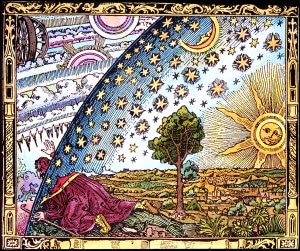Happy Chinese New Year!
It is the Year of the Monkey and it is said the character of the next 12 months will mirror some traits we associate with monkeys: quick moving, volatile, tricky, changeable and inventive. In the field of meditation we often hear the mind described as a troublesome “monkey mind”, meaning it is relentlessly active, fickle and easily distracted, making meditation a challenge.
This monkey quality of the mind follows logically from the evolutionary process in which the primate brain was honed in millions of years of tree dwelling. The arboreal habitat drove the development of visual dominance, color perception, incomparable eye-hand dexterity and much of the underlying hardwiring and intelligence of the human brain. So if our minds are monkey-like, we certainly come by it naturally.
My teacher Swami Muktananda used to say that the natural restlessness of the mind was a most beneficial feature, since because of it the human mind will never cease wandering until it finds unwavering peace in self-realization. Accepting the constant movement of the mind as an asset in the spiritual quest is a powerful step toward making the mind an ally. Aligning with nature, making alliances with natural tendencies rather than maligning or attempting to subdue them, is at the heart of yoga practice.
In keeping with the traditional analogy, Hanuman, the heroic monkey god in the epic Ramayana, is a metaphor for the mind. Described as spirited, restless, energetic and shape-shifting, Hanuman was instrumental in the reuniting of the two divine incarnations, Rama and Sita. In yogic parlance, the mind is born of breath, or prana, and Hanuman is the offspring of Vayu, god of air and wind. Vayu first taught pranayama, breath technique, to his son Hanuman, who in turn taught it to mankind. (Another fun fact: The Surya Namaskar -salutation to the sun – was devised by Hanuman as a greeting for his teacher Surya).
Hanuman’s devoted service to his Lord, Rama, accomplished the recovery of Sita, who represents the individual soul, to reunion with her beloved. The story instructs the yogic strategy of selfless service as a medium for the process of enlightenment. It is also about the harnessing of the breath, and hence the mind, for that purpose.
Sita, having been abducted to Sri Lanka by the ten headed ego-demon Ravanna, sat day after day at the root of an ashoka tree, and prayed for rescue. Sita, whose name means “furrow” was the daughter of Bhumi Devi, mother earth. Her situation at the root of the tree is a reference to the Kundalini Shakti coiled at the base of the human spine, the tree of life. Hanuman was sent to reassure her that help was on the way, and with an epic leap, soared over the ocean to Sri Lanka and came to the tree under which Sita sat pining. Hanuman began to murmur “Ram, Ram, Ram” and Sita looked up. Hanuman then gave her a ring from Rama as a promise that he was coming to rescue her.
This monkey-mind of ours can be mastered.
With mantra and breath awareness, in love and in service to our highest inner principle, the mind in meditation can make the quantum leap that rescues the soul from egoic captivity, and merges her in the supreme joy of union.
Cheers and gratitude for the Year of the Monkey!











Leave a Reply